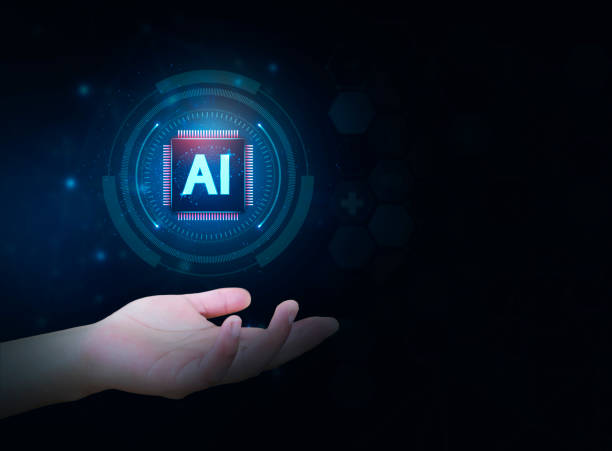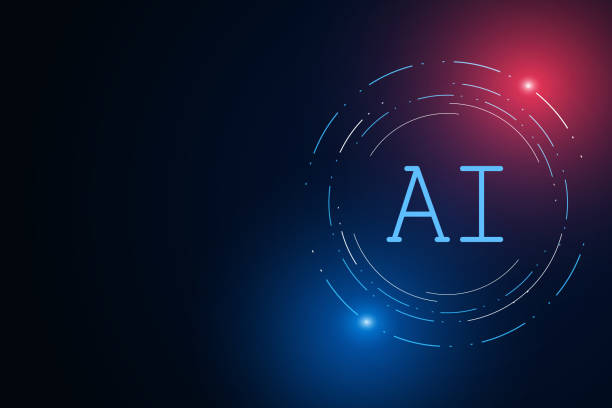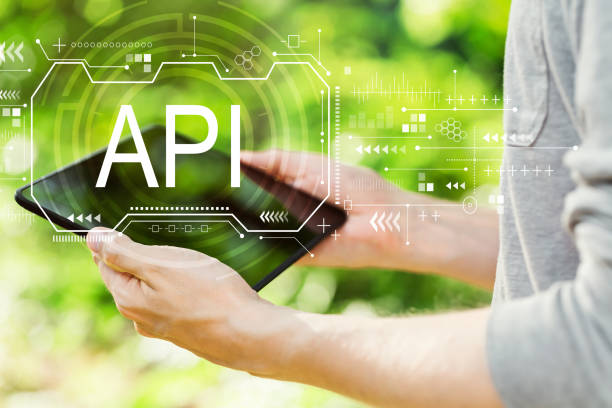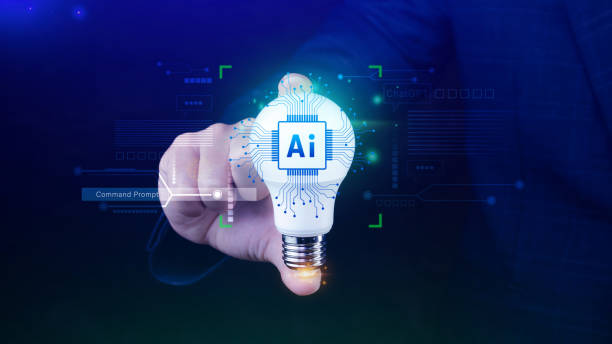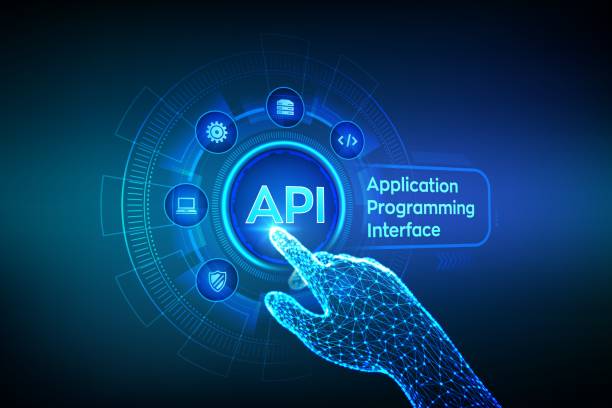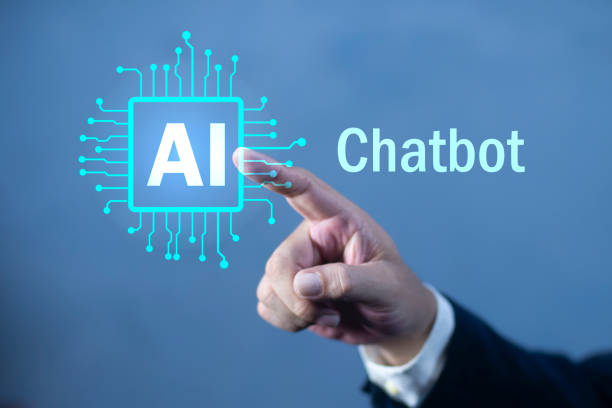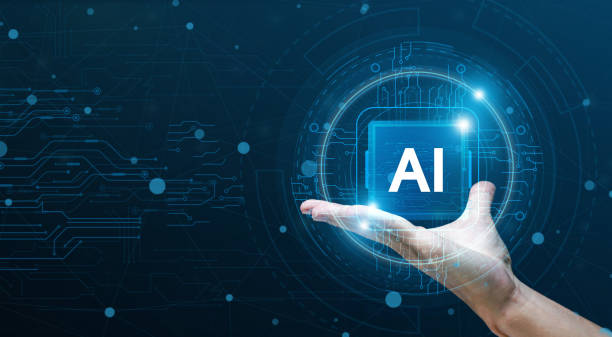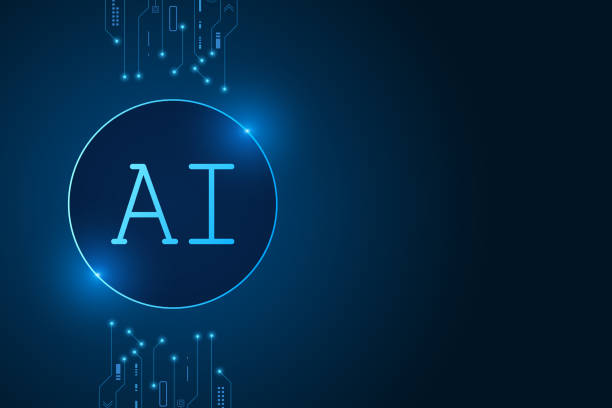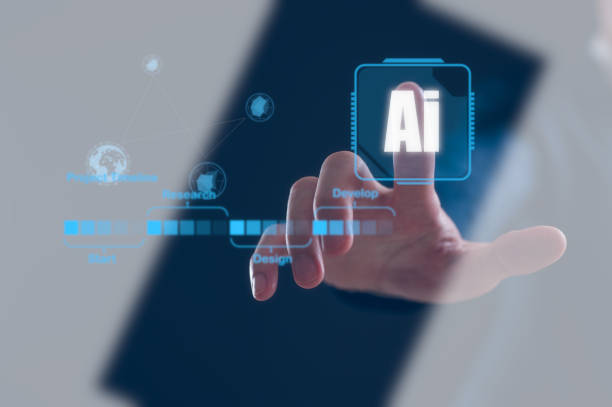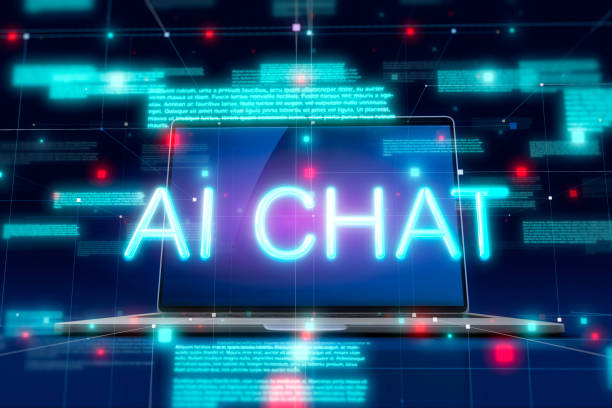What is an Artificial Intelligence Robot: Definition and Key Concepts
#Artificial Intelligence Robot is a combination of two important fields: #artificial intelligence and #robotics.
Simply put, an #AI robot is a robot that uses #artificial intelligence algorithms and techniques to perform tasks intelligently and independently.
These robots are able to act by receiving information from the surrounding environment, analyzing data, learning from experiences and making decisions based on defined goals.
In general, #AI robots try to mimic human cognitive abilities such as problem solving, pattern recognition, natural language understanding, and learning.
These robots are designed to operate effectively in complex and unpredictable environments.
Artificial intelligence enables these robots to react automatically and perform their tasks without the need for precise planning for every situation.
Therefore, AI robots have become a #revolution in various industries and have a very high potential for improving efficiency and productivity.
For more information about artificial intelligence, you can visit the Wikipedia page.
Are you losing business opportunities because of an old website? With Rasaweb, solve the problem of not attracting potential customers through your website forever!
✅ Attract more high-quality leads
✅ Increase brand credibility in the eyes of customers
⚡ Get free advice on corporate website design
Main Components of an Artificial Intelligence Robot
An AI robot typically consists of the following components: Sensors used to collect information from the environment.
Cameras, microphones, touch sensors, temperature and pressure sensors are among the common sensors.
Processor that processes the information collected by the sensors and makes decisions.
Artificial intelligence algorithms are executed in this section.
Actuators that execute the processor’s commands and set the robot in motion.
Motors, pumps, arms, and other tools are among the actuators.
Power Source that provides the energy needed for the robot to function.
Batteries, solar cells, and wired power supplies are among the common power sources.
Software, which includes artificial intelligence algorithms, control programs, and a user interface.
The interaction of these components makes it possible for the AI robot to function automatically and intelligently.
For example, an #AI robot designed to clean the floor of a home uses its cameras and sensors to scan the environment, identify obstacles, and use routing algorithms to choose the best path for cleaning.
Then, using its motors and brushes, it cleans the floor and automatically moves to the charging station when it needs to be charged.
Various Applications of Artificial Intelligence Robots
Artificial intelligence robots have extensive applications in various industries.
In the #manufacturing industry, they are used to perform repetitive and dangerous tasks such as welding, painting, and packaging.
This increases productivity, reduces costs and improves worker safety.
In the #medical field, surgical robots perform surgery with high precision, nurse robots care for patients, and pharmacist robots prepare and distribute the necessary drugs.
In #transportation, self-driving cars use #AI robots and advanced sensors to drive automatically.
This can reduce accidents, reduce traffic and improve transportation efficiency.
In #customer service, chatbot robots use natural language to answer customer questions and solve their problems.
This improves customer satisfaction and reduces customer service costs.
For more information on the applications of artificial intelligence in various industries, you can refer to specialized articles in this field.
| Industry | AI Robot Application |
|---|---|
| Manufacturing | Welding, painting, packaging |
| Medical | Surgery, nursing, pharmacy |
| Transportation | Self-driving cars |
| Customer Service | Chatbots |
Challenges of Developing and Using Artificial Intelligence Robots
The development and use of artificial intelligence robots comes with many challenges.
One of the most important challenges is the high cost of research and development of these robots.
Designing, building and programming AI robots requires significant expertise and resources.
Another challenge is the need for large and high-quality data to train artificial intelligence algorithms.
Artificial intelligence robots need a huge amount of data to learn and improve their performance.
Also, ethical and social issues related to artificial intelligence robots are among the important challenges.
There are concerns about job losses, privacy, discrimination and misuse of these robots.
It is necessary to develop appropriate ethical and legal frameworks for the development and use of artificial intelligence robots.
Click here to preview your posts with PRO themes ››
The impact of artificial intelligence robots on the labor market is a controversial issue.
Some believe that these robots will eliminate many jobs, while others believe that they will create new jobs and generally increase productivity and economic growth.
In any case, it is necessary to have proper planning to manage these changes in order to minimize their negative effects.
How much does it cost you to lose business leads due to an unprofessional website? Solve this problem forever with professional corporate website design by Rasaweb!
✅ Increase the credibility and trust of potential customers
✅ Easier attraction of new business leads
⚡ Get free consultation now!
The Future of Artificial Intelligence Robots
The future of artificial intelligence robots is very bright and full of potential.
With increasing advances in the field of #artificial intelligence, #robotics and related technologies, AI robots are expected to play a much more important role in our lives in the near future.
They will be able to perform more complex tasks, interact with humans more naturally and operate in more challenging environments.
In the future, AI robots will be present in homes, workplaces, hospitals, schools and many other places.
They will help us have a more comfortable, healthier and more productive life.
For example, home robots can perform tasks such as cleaning, cooking, caring for children and the elderly.
Educational robots can help students learn lessons and medical robots can assist doctors in diagnosing and treating diseases.
For more information on the future of artificial intelligence, you can visit the Future Timeline website.
The Difference Between Artificial Intelligence Robots and Traditional Robots
The basic difference between #AI robots and traditional robots is in the amount of intelligence and independence of their operation.
Traditional robots are usually programmed to perform specific and repetitive tasks and do not have the ability to learn or adapt to new situations.
In contrast, #AI robots use machine learning algorithms and other #artificial intelligence techniques to learn from experiences and improve their performance.
They are able to make new decisions and perform their tasks more effectively by changing environmental conditions.
For example, a traditional industrial robot may be programmed to weld specific parts and only be able to perform this task.
But an #AI robot can use its cameras and sensors to detect the shape and position of parts and automatically adjust the welding program.
This increases the robot’s flexibility and efficiency.
Different Types of Artificial Intelligence Robots
Artificial intelligence robots can be categorized based on various criteria.
Based on the type of application, they can be divided into industrial robots, medical robots, home robots, military robots, etc.
Based on the type of movement, they can be divided into Mobile Robots, Robotic Arms, and Fixed Robots.
Based on the level of intelligence, they can be divided into Narrow AI Robots, General AI Robots, and Super AI Robots.
Currently, most of the existing AI robots are Narrow AI robots and are only capable of performing specific tasks.
But with more advances in the field of #artificial intelligence, General AI and Super AI robots are expected to be developed in the near future.
Click here to preview your posts with PRO themes ››
For more information on types of robots, you can visit the Robotics Association website.
| Classification Criteria | Types |
|---|---|
| Type of Application | Industrial, Medical, Home, Military |
| Type of Movement | Mobile, Arm, Fixed |
| Level of Intelligence | Narrow AI, General AI, Super AI |
Machine Learning and Its Role in Artificial Intelligence Robots
Machine learning is one of the most important branches of artificial intelligence that plays a very important role in the development of artificial intelligence robots.
Machine learning allows robots to learn from data and improve their performance without the need for precise programming for every situation.
Machine learning algorithms help robots recognize patterns in data, make better decisions, and perform their tasks more effectively.
There are different types of machine learning algorithms, each of which is suitable for specific applications.
Supervised learning, unsupervised learning and reinforcement learning are among the common algorithms.
Artificial intelligence robots use these algorithms to perform tasks such as object recognition, routing, planning and control.
For example, an #AI robot designed to recognize objects in an environment can learn how to recognize different objects from labeled images using supervised learning algorithms.
Then it can use this knowledge to recognize objects in new images.
For more information on machine learning, you can visit the Wikipedia page.
Does your current website reflect your brand’s credibility as it should? Or does it drive away potential customers?
With years of experience in designing professional corporate websites, Rasaweb is your comprehensive solution.
✅ A modern, beautiful website that matches your brand identity
✅ Significant increase in attracting new leads and customers
⚡ Contact Rasaweb now to get a free consultation on corporate website design!
Relationship Between Artificial Intelligence Robots and the Internet of Things
#Internet of Things (IoT) refers to a network of devices and objects connected to the Internet that are capable of collecting and exchanging data.
#AI robots can act as part of the Internet of Things and use the data collected by other devices to improve their performance.
For example, an #AI robot designed to manage traffic in a city can use the data collected by traffic sensors, cameras and other IoT devices to predict traffic flow and optimize routes.
This can reduce traffic, reduce air pollution and improve transportation efficiency.
Also, AI robots can help IoT devices to act more intelligently and independently.
For example, an #AI robot can help a smart thermostat learn energy consumption patterns and automatically adjust the temperature of the house.
For more information about the Internet of Things, you can visit the Oracle website.
Ethical Issues in the Use of Artificial Intelligence Robots
The use of artificial intelligence robots comes with many ethical issues.
One of the most important issues is accountability for the performance of AI robots.
If an AI robot causes damage or harm, who will be responsible? Is the robot manufacturer, its programmer, or its user responsible? Another issue is privacy and data security.
AI robots need to collect and process a large amount of data for their operation.
This data may include personal and sensitive information.
How can the privacy and security of this data be protected? Also, there are concerns about discrimination and inequality.
If artificial intelligence algorithms are designed unfairly, they may discriminate against certain groups of people.
It is necessary to develop appropriate ethical and legal frameworks for the development and use of artificial intelligence robots to prevent these issues from occurring.
Also, education and awareness raising to the public about ethical issues related to artificial intelligence robots is also necessary.
Click here to preview your posts with PRO themes ››
The impact of artificial intelligence robots on social relationships is an important topic.
Some believe that these robots can help improve social relationships, while others believe that they can cause isolation and reduce human interactions.
In any case, more research is needed in this area to understand the real effects of AI robots on social relationships.
FAQ
| Question | Answer |
|---|---|
| What is an artificial intelligence robot? | It is a robot that uses artificial intelligence capabilities to understand the environment, reason, learn and make decisions to perform complex tasks independently. |
| What is the main difference between a regular robot and an AI robot? | AI robots can learn and adapt to their environment, while ordinary robots usually operate based on fixed and pre-determined programming. |
| In what fields are AI robots used? | In fields such as industry (production lines), medicine (robotic surgeries), services (customer support, smart vacuum cleaners), exploration (space and underwater) and entertainment. |
| How do AI robots learn? | They acquire new skills through machine learning algorithms and deep learning, by analyzing large data and identifying patterns. |
| Can AI robots have emotions? | Currently, no. They can identify or simulate emotions, but do not have a real experience of emotions like humans. |
| What are the most important advantages of using AI robots? | Increased productivity, reduced human error, performing dangerous or repetitive tasks, and providing innovative and efficient services. |
| What are the challenges in developing AI robots? | The need for abundant and quality data, the complexity of algorithms, ethical issues, cybersecurity and the high cost of research and development. |
| Are AI robots dangerous to humans? | By following safe design principles and ethical regulations, no. Concerns are more about social and economic impacts such as changes in the labor market. |
| What is an example of an AI robot in everyday life? | Smart vacuum cleaner robots (such as Roomba) that automatically map and clean the house, or smart voice assistants (such as Siri and Alexa). |
| How is the future of AI robots predicted? | They are expected to become smarter, more autonomous and capable of more complex interactions with humans and play a more prominent role in industry, medicine, transportation and everyday life. |
And other services of Rasa Web advertising agency in the field of advertising
Smart advertising campaign: a fast and efficient solution for user interaction with a focus on smart data analysis.
Smart SEO: Designed for businesses looking for digital branding through Google Ads management.
Smart Conversion Rate Optimization: An effective tool to improve SEO ranking by optimizing key pages.
Smart UI/UX: A professional solution to improve SEO ranking with a focus on SEO-oriented content strategy.
Smart Brand Identity: Designed for businesses looking to increase website traffic by optimizing key pages.
And more than hundreds of other services in the field of internet advertising, advertising consulting and organizational solutions
Internet Advertising | Advertising Strategy | Report Ad
Resources
The future of artificial intelligence robots: applications and challenges
,What is a smart robot? – Advantages and disadvantages + applications – Aria Nik
,Intelligent Robot and Artificial Intelligence
,Illustration of the United Nations with Artificial Intelligence/Illustration of the Labor Market
? To jump your business in the digital world, Rasaweb Afarin Digital Marketing Agency, with expertise in areas such as WordPress website design, SEO, and content marketing, offers innovative and targeted solutions.
📍 Tehran, Mirdamad Street, next to the Central Bank, South Kazerun Alley, Ramin Alley No. 6

